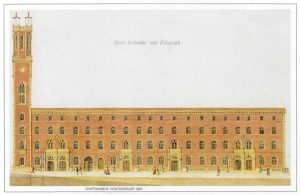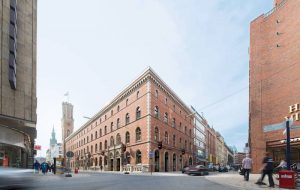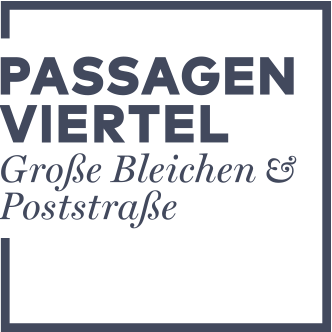1845
1845
Telegraph Technology
Up until 1866, Germany was served by an increasingly confusing array of postal services operating side by side. In Hamburg, early attempts were made to pool their service facilities in a single place and to streamline the overall system. A new postal building constructed by architect Alexis de Chateauneuf between 1845 and 1847 was distinguished by Tuscan arches and elements in late northern gothic style. An optical needle telegraph, considered a modern communications technology in its time, was installed in the tower.
Inspired by Schinkel, Alexis de Chateauneuf (1799-1853) constructed the new postal building in a strictly cubic brick style and combined the renaissance architecture (round Tuscan arches) with elements in late northern gothic style. The facade was notable by the absence of the white render applied to all Hamburg buildings following the Great Fire of 1842; this attracted much criticism from the public.


Housing the Hamburg Municipal Post, the Thurn- und Taxis’sche Post, the Royal Hannover Post and the Royal Swedish Post, the floorplan of the Alte Post building reflects the fragmented structure of communications services in those days. Each of these postal services had a separate entrance identified by its own coat of arms.
An optical needle telegraph was operated in the tower at the corner of the building until 1848, making Hamburg the last link in a signalling chain extending to the mouth of the river Elbe. This link was later replaced by an electric Morse telegraph.
This part of Königstrasse was subsequently renamed Poststrasse. Following the departure of the postal services, various municipal offices used the building from 1887. Between 1968 and 1971 it was gutted and converted into a modern retail and office complex.
